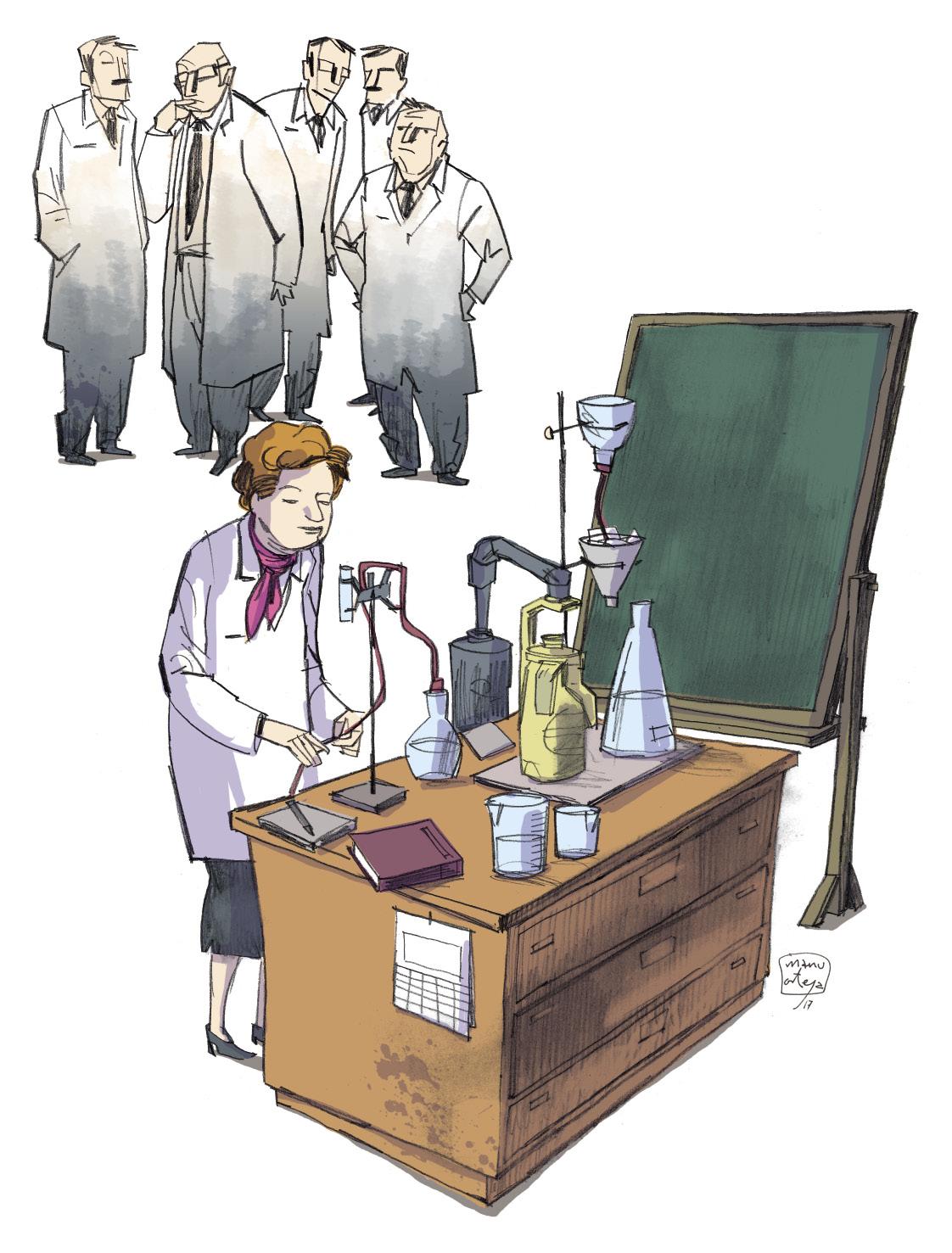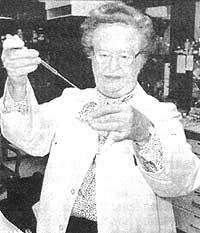Gertrude Belle Elion, looking for new remedies
2017/09/01 Etxebeste Aduriz, Egoitz - Elhuyar Zientzia Iturria: Elhuyar aldizkaria

The day after his aunt died, Jon received the letters that were in his mailbox. In one of the letters, a young woman told her emotionally how she chose a wax image. It was a school job and they had to choose a character. After investigating scientists on the Internet, he became his hero.
Jon was thrilled with that letter. His aunt was very close and knew that his life was amazing to anyone. Gertrude Belle Elion struggled hard to become a scientist and worked hard to achieve his main goal: to heal people.
He was born in New York in 1918 and since childhood he had a great passion to know. At fifteen, when his grandfather died sick of cancer, he saw clear that he would be a scientist. “I wanted to do something to cure that terrible disease,” he wrote. After studying chemistry at the public university and graduating at age 19, he had no opportunity to study higher education because his parents had no money. He wanted to start working in a laboratory as a chemist, but in the midst of the economic crisis there were very few opportunities and less for women. “No one took me seriously. They told me that women did not make chemistry. I, however, saw no reason why women could not do that work.”
Finally he got a job in a laboratory, at first without charging and then with a very small salary. He also taught, and when he managed to save some money, he moved to the University of New York for a master's degree in chemistry. There she was the only woman.
When the master's degree was completed in 1941, many men had gone to World War II, which implied the need for chemicals in the industry. Thus, he began to work in the food industry, measuring the acidity of the pickles, the color of the mahonesa, etc.
Three years later, he had the opportunity to enter the pharmaceutical company Burroughs Wellcom to collaborate with Dr. George Hitchings. Hitchings was fascinated by Elion's intelligence and energy, and although he began as an assistant, he soon became a leading researcher.
Elion was impressed from the beginning. It gave him the opportunity to continue learning constantly and, in addition, his goal was the one he always wanted to do: develop new drugs.
To do this, Hitchings worked on an innovative pathway, investigating the metabolism of nucleic acids. In art. Little knew of the nucleic acids. They had just suspected that genes could be in DNA and were almost ten years away to clarify the structure of DNA. However, it was clear that nucleic acids were essential for cells and Hitchings thought that hindering their synthesis could be a way to fight cancer cells and bacteria. For this purpose, it intended to create false components of DNA. These components were to be similar to real ones for cells to replace real ones, but at the same time they would avoid generating DNA. Thus, cancer cells and bacteria that reproduce much faster than healthy human cells could not advance.
Elion had to guess how to create these compounds. And correct. In addition, they realized that, in addition to being a way for the manufacture of new drugs, they were a great instrument of investigation, since the study of the influence of these compounds allowed to extract many conclusions on the cellular activity.
In the early 1950s, 6-MP or mercaptopurine was created. It was the first effective compound against cancer. It served for the treatment of childhood leukemia and is currently still used together with other compounds.
While working, Elion also began to do the doctorate, but two years later, from the university he was pressured to choose work or doctorate. Elion was sure he wasn't going to leave that job.
Mercaptopurine was followed by more medications: acatioprine, first immunosuppressant for organ transplants, pyrimethamine, antimmalaria, acylobir, herpes anti-virus, etc.
After his official retirement in 1983 he continued to support his team. Thus, the first antiretroviral, zidovudine, or TR was developed to treat AIDS. Although Elion refused to have merits in it, one of the researchers made it clear: “Trudy has a lot to do with AZTI, although he was officially retired, working and advising with us.”
In 1998 he received the Nobel Prize in Medicine with Hitchings and James Black. She was the tenth woman to win the Nobel Prize and one of the few she achieved without being a doctor. But, as Elion himself said, this was not the most prestigious award: “Our goal was to heal people and there is no prize to give more satisfaction and satisfaction.”
He received eleven other awards and recognitions, as well as 25 honorary doctorates. When he retired, he approached education. He worked as a mentor for medical students, with the same passion with which he began. And when I visited the universities, I always asked to be with the students. He loved sharing his experience with the new generations of researchers. “Do not let anyone be spoiled by your dreams, which I used to tell you, and work hard to get what you want, because nothing that deserves in this life comes with ease.”
Jon knew his aunt well and knew he was going to respond to that young woman who wrote the letter to him. Jon himself answered him and sent him a book of his, as his aunt would have liked him. Later, the mother of the girl sent her a picture: the young woman dressed in a white laboratory robe, a bud in her hand and an imitation of the Nobel Prize medal in the neck.
Bibliography Bibliography Bibliography
AVERY, M.E. (2000): “Gertrude B. Elía 1918–1999. A Biographical Memoir by Mary Ellen Avery”. National Academy of Science
ELION, S.A. (1988): “Gertrude B. Elio. Biographical”. The Nobel Prize
COENIG, R. (2006): “The Legacy of Great Science: The Work of Nobel Laureate Gertrude Elion Lives On”. The Oncologist
George Hitchings and Gertrude Elion”. Science History Institute

Gai honi buruzko eduki gehiago
Elhuyarrek garatutako teknologia





